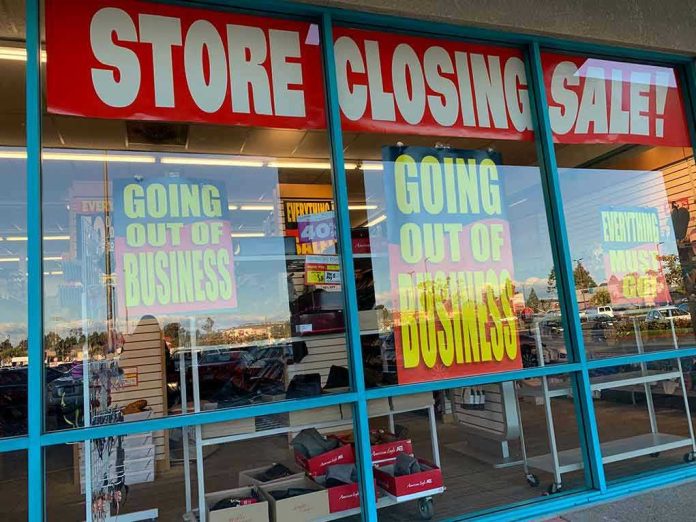
If you ever thought a single publication could weather two world wars, the Civil War, the Dust Bowl, and the dawn of the internet—only to be undone by the digital age—prepare to rethink what is truly permanent in American life.
Story Snapshot
- The Farmers’ Almanac, a fixture since 1818, will publish its final edition in 2026.
- Mounting financial pressures and the relentless march of digital media forced the decision.
- Generations of Americans mourn the end of a beloved source for weather, wisdom, and tradition.
- The Almanac’s closure signals a deeper crisis for traditional print institutions in the U.S.
208 Years of Weather, Wisdom, and Americana
When the Farmers’ Almanac first appeared in 1818, America was a nation of farmers who looked to the sky for their fortunes. David Young’s little book, born in Lewiston, Maine, quickly became an oracle for planting, harvesting, and surviving the whims of nature. Over two centuries, it evolved into an indispensable household companion, dispensing not just forecasts but gardening lore, home remedies, and the kind of practical advice that thrived before Google was a verb. By the 20th century, millions of copies graced kitchen tables, glove boxes, and barns, its forecasts—crafted from a secret formula blending sunspots and lunar cycles—serving as both conversation starter and lifeline.
With each annual release, the Almanac stitched itself deeper into the fabric of rural and suburban life. Its editors, Sandi Duncan and Peter Geiger, became trusted guides, their stewardship carrying the brand’s mystique and mission forward. Readers and fans, from backyard gardeners to lifelong farmers, treated its pages as both tradition and talisman, passing copies down like family recipes.
Why Even Icons Fall: The Real Story Behind the Fold
The Farmers’ Almanac’s demise was not a thunderclap but a slow, chilling frost. Print publishing has faced an existential crisis for decades, battered by shrinking advertising, dwindling newsstand sales, and digital content available at the swipe of a finger. For the Almanac, the tipping point arrived in the 2020s, as financial pressures mounted and the cost of producing and distributing a print volume in a digital world became unsustainable. The 2026 edition, already on shelves, marks the final chapter—an end formally announced in November 2025, with online content scheduled to vanish by year’s end.
Leadership cited “growing financial challenges” and an “increasingly chaotic media environment,” acknowledging that even a 208-year-old institution could not outpace the economic headwinds facing legacy media. While the Old Farmer’s Almanac (its older, distinct cousin) soldiers on, the end of the Farmers’ Almanac feels personal—a rupture in the continuity of American daily life. The publication’s staff and contributors now focus on a dignified farewell, their gratitude to loyal readers echoing in every public statement.
The Emotional Aftershock: Loss, Legacy, and What Lingers
The announcement unleashed a national wave of nostalgia and mourning. On social media and in newsrooms, Americans called it “one of the saddest days in history.” For rural communities especially, the loss is more than sentimental; it is practical and cultural. The Almanac’s blend of weather prediction, seasonal advice, and folk wisdom shaped planting schedules, family rituals, and even dinner-table debates. Now, millions must grapple with a future less rooted in shared tradition, where algorithms replace folklore and wisdom is crowdsourced, not curated.
Yet, the legacy persists. As editor Sandi Duncan reflected, the publication’s true goal was always to “spread a way of thinking—one that values simplicity, seasonal wisdom, and the amazing gifts from nature.” This ethos, passed down through generations, will outlast ink and paper. Stories, tips, and even the Almanac’s signature humor will continue to echo in gardens, kitchens, and conversations, long after the presses fall silent.
What the Almanac’s End Reveals About America’s Changing Media Landscape
The closure of the Farmers’ Almanac is more than an isolated event; it stands as a symbol of broader upheaval. Print media’s decline, hastened by digital convenience and fractured attention spans, has claimed countless venerable titles. Yet, none carried quite the same blend of utility, tradition, and charm as the Almanac. Industry experts and cultural historians agree: the loss highlights the urgent need for innovation and adaptation if other institutions hope to survive this moment of transformation.
For American conservatives and defenders of tradition, the Almanac’s collapse stings as a cautionary tale. It underscores how quickly the cultural ground can shift beneath even the most enduring pillars. The challenge now is not just to mourn what’s lost, but to ask: what will fill the void for wisdom, connection, and a sense of continuity in an era that prizes speed over substance? The answer may determine the fate of countless other icons teetering on the brink.









